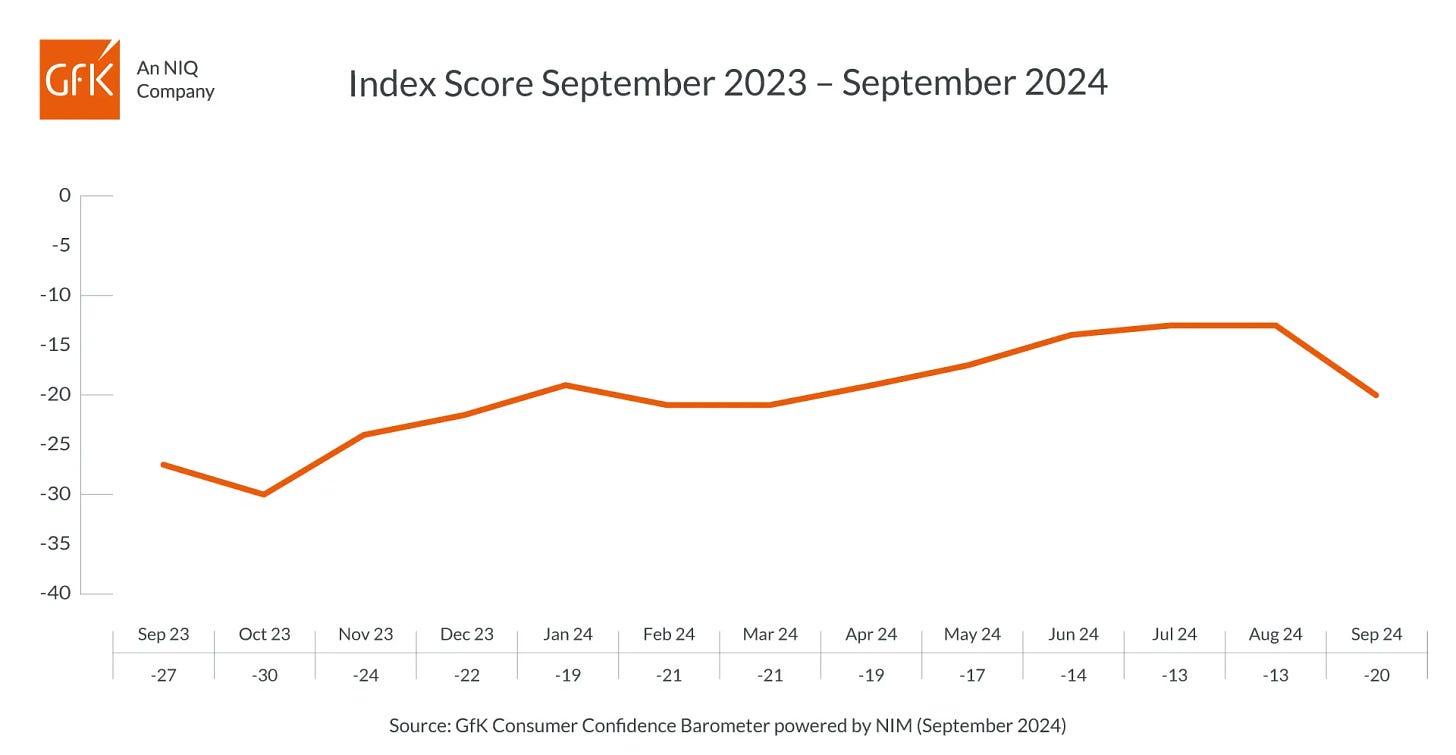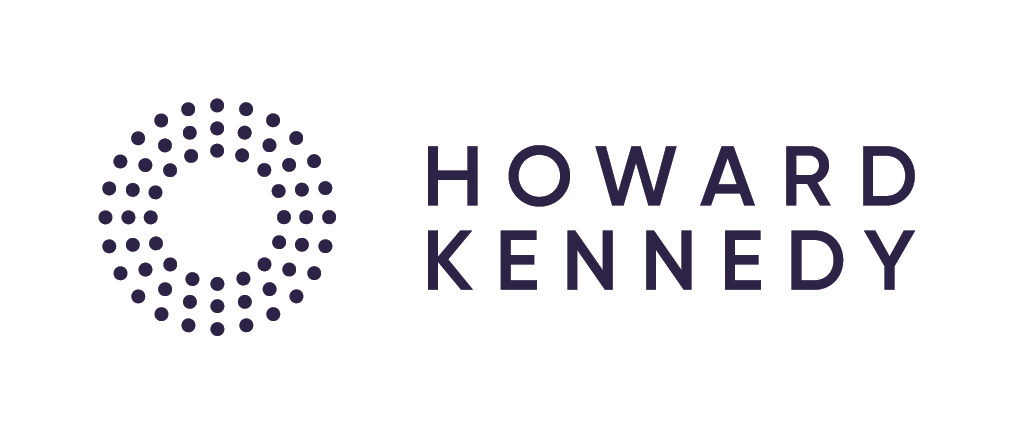Mixed signals
What is really happening to consumer spending behaviour?
So here’s an odd thing. Look at recent press coverage about UK consumer confidence and you’d be forgiven for needing a gin and tonic and a lie down. “UK Consumer Confidence sees big fall in September – down seven points” is the headline from the well-respected GFK index, for example, and it is their graph of the same measure at the top of this piece.
The press commentary which this release prompted was entirely understandable. The new Government have, to put it mildly, not quite got their PR engine firing yet and in the run-up to the October 30th budget the narrative has been pretty doom-laden. The Government, it seems, is '“talking Britain down” and causing more economic distress than they are solving.
But hang on.
I’ve spoken to a whole bunch of retailers over the last few weeks who have reported exactly the opposite - that after a very long period of extremely stagnant consumer demand, things just might be looking a bit brighter more recently. For a public domain illustration, just consider “Currys has hailed a ‘positive start to the year’ as sales rise” from industry bible Retail Week.
This sudden sense of there being a bit more pep and vigour in consumer spending is not just limited to Currys or to the electricals sector (which will have been boosted by Olympics and football enthusiasm). Off the record, retailers in multiple sectors have acknowledged seeing the same thing.
Now everyone is far too battle-scarred to hail this as the beginning of a new dawn - we’ve all seen that before, and are all too well aware that customer numbers can go down as well as up. But it is odd, this apparent divergence between measured consumer confidence and observed consumer behaviour.
Indeed, the hump shown in the graph above in the middle of this year when consumer confidence was rising illustrates the same point - in many retail sectors, the spring and early summer were simply horrible trading periods.
So how can consumer confidence and actual behaviour seem to run in opposition to each other. I have a couple of theories.
Lead and lag
The first explanation, of course, is timing. Are we now seeing the benefit of spending decisions that were really born during that period of higher consumer confidence early in the year? Did consumers go through some version of “things are looking a bit more stable and so when the summer is over and the kids have gone back to school we should decorate/update our wardrobes/buy a new TV”?
That is certainly possible, and of course is the most worrying explanation - it implies that the recent fall in consumer attitudes will come back to haunt us in future big spending windows like Black Friday or Christmas. Not a thrilling prospect.
The devil in the detail
Another possibility, though, is illustrated by this table which gives some of the component detail behind the confidence measures:
Disregarding the monthly moves for a moment, look at how much more negative consumers are about ‘the economy’ than they are about their own prospects.
There is a sense in these numbers that as consumers we are hearing the doom and gloom about the wider economy and registering it in lower confidence about the future, but see that ‘external’ economy as somehow slightly disconnected from our own personal circumstances. For many consumers real wages are rising and for some lower interest rates in prospect present some relief too.
This disconnection between wider economic commentary and personal circumstances was brought home to me in discussion with one retailer where we observed that a lot of the scary stories about the budget, for example, focussed on the prospects for increased Capital Gains and Inheritance taxes, which relatively few of his mass-market consumers will ever pay. It is possible to pick up the ‘everything is terrible’ vibe from pieces written by wealthy commentators worrying about their second homes whilst also recognising that that has little to do with your own life.
The low bar
The final reason why it might feel to many in business like consumer behaviour is not as bad as the confidence measurements would indicate is simply that we’ve all become too used to really terrible numbers! Many higher ticket sectors have seen the volume of customers visiting their stores or their websites in very sharp decline over the last 2 years - such that volumes are now 10 or even 20% lower than they were pre-Truss. What looks now like the beginnings of a recovery is really just a flattening out of the decline - we have a long way to go before many retailers are able to report strong underlying growth again.
Looking forward
Whatever the real reason for this last few weeks of better retailing weather, let’s hope it continues. There is no doubt that critical to that will be a continuation of real wage rises, stable or declining interest rates and hopefully the beginning of some positive economic news in other areas like investment in public services.
The forthcoming Budget will, therefore, be of vital importance to all of us in consumer businesses. Look out later this month for a Moving Tribes pre-Budget analysis of some of the ways that Rachel Reeves and her team can lend a hand to the High Street.
P.S.
As you’ll know from last week’s post, Moving Tribes is kept free for you to read and share thanks to generous support from partners. I’m delighted to be working with the excellent team at Howard Kennedy for this series of posts - they are a full-service legal team with a lot of experience of the kinds of issues consumer businesses often face, so do look them up if you need to.




